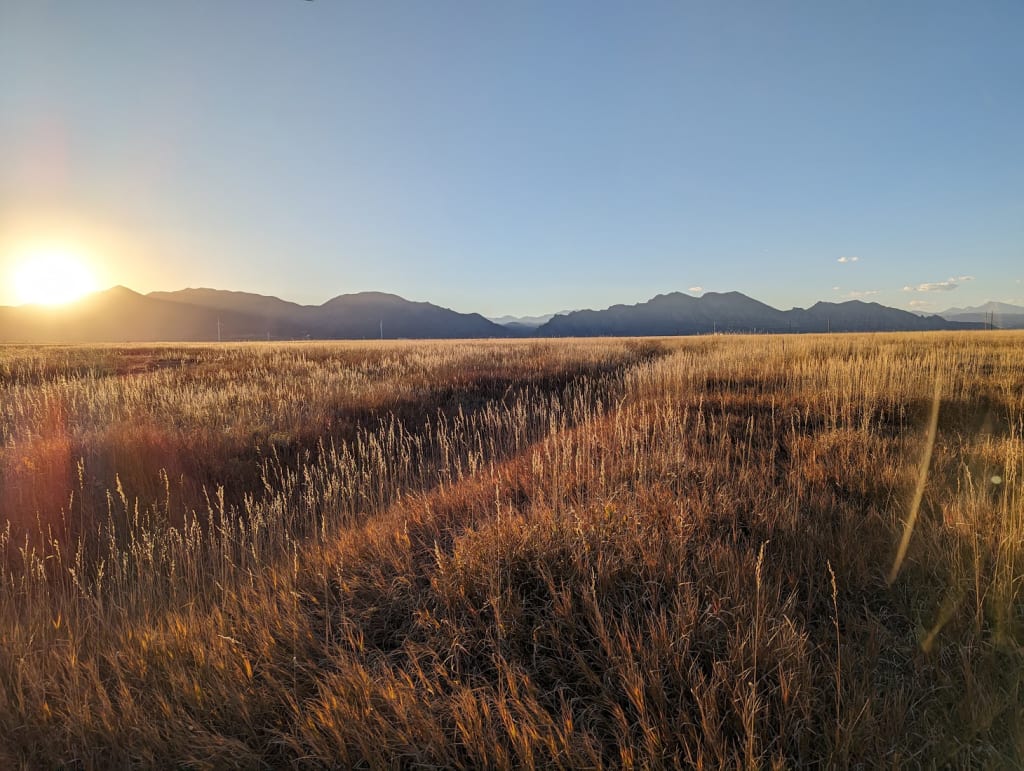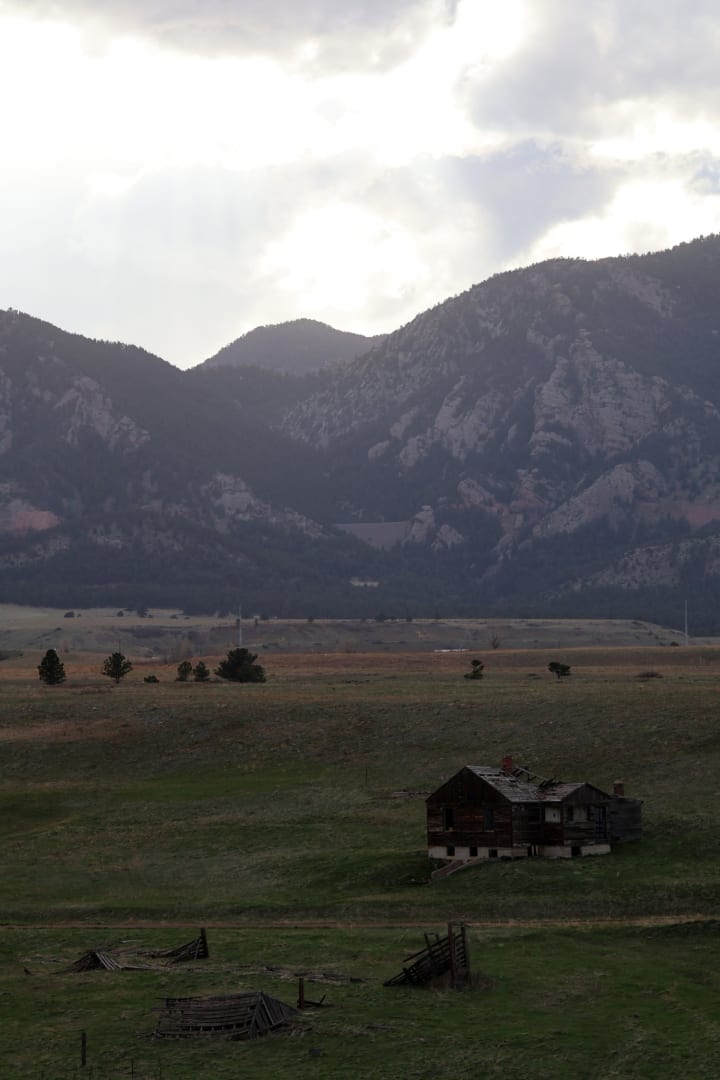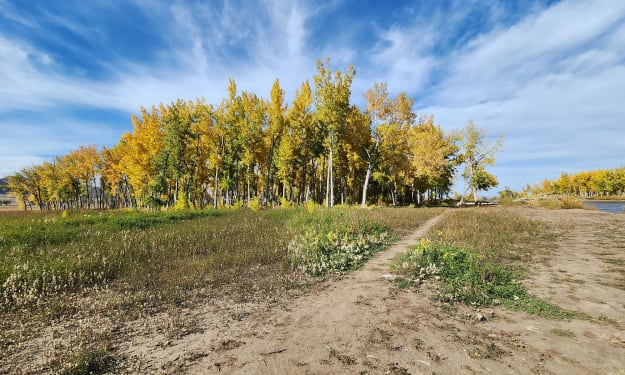Rocky Flats National Wildlife Refuge
A weird little spot between Denver and Boulder

Ease of Walking: Starting at the north side of the park, this is a relatively easy, flat path, though true to its name, it tends to be rocky. Starting from the south side of the park (which requires driving through neighborhoods to get to the small parking lot), it is a lot more hilly. There is a new trail being built off of the north paths, but it is not open yet.
Wildlife I Have Observed: Western meadowlarks, horned larks, vesper sparrows, savannah sparrows, northern harriers, red-tailed hawks, bald eagles, coyotes, mountain cottontails.

Wildlife I Have Not Yet Observed: The refuge provides crucial habitat for the threatened Preble's meadow jumping mouse, which relies on the riparian zones within the refuge.
Views: The views of the mountains are unmatched here from the north end of the park. You can also see the historic Lindsay Ranch property.

History: The Rocky Flats National Wildlife Refuge, located near Denver, Colorado, is a unique and complex site that has transformed from a controversial former nuclear weapons production facility into a haven for wildlife. Covering approximately 5,237 acres, the refuge represents a significant reclamation and repurposing of land once heavily contaminated and fraught with environmental challenges.
Rocky Flats was established in 1951 as a key facility in the United States' nuclear weapons production complex. It produced plutonium triggers, or "pits," for nuclear warheads, playing a crucial role during the Cold War. However, its operations led to significant environmental contamination, primarily with plutonium, which raised concerns among local communities and environmental activists.
The production at Rocky Flats came under intense scrutiny due to safety and environmental violations. In 1989, a joint FBI and EPA raid uncovered extensive environmental law violations, leading to the cessation of nuclear production activities and the beginning of a long cleanup process.
The cleanup of Rocky Flats was a monumental task undertaken by the U.S. Department of Energy, the Environmental Protection Agency, and the Colorado Department of Public Health and Environment. The remediation efforts, which cost approximately $7 billion, focused on decontaminating the site to ensure it posed no threat to public health or the environment.
Cleanup activities included the removal of contaminated buildings, soil, and waste, as well as the treatment of groundwater. The most contaminated areas, comprising about 1,300 acres, remain under the control of the DOE and are subject to ongoing monitoring and maintenance.
Following the cleanup, the majority of the site was designated as a national wildlife refuge in 2007. This transformation was aimed at preserving the natural habitat and providing a sanctuary for wildlife while offering public recreational opportunities.
The management of Rocky Flats National Wildlife Refuge involves ongoing monitoring and maintenance to ensure the safety of the site. The DOE retains responsibility for the most contaminated areas, where continuous surveillance and periodic sampling are conducted to detect any potential issues.
The U.S. Fish and Wildlife Service manages the majority of the refuge, focusing on habitat restoration, wildlife management, and public engagement. The USFWS works closely with other federal and state agencies to ensure that the refuge's ecosystems are maintained and that any emerging concerns are promptly addressed.
Looking ahead, the future of Rocky Flats National Wildlife Refuge involves balancing the goals of wildlife conservation, public recreation, and ongoing safety assurances. Continued habitat restoration efforts are planned to enhance the ecological integrity of the refuge and support the diverse species that rely on it.
Public engagement and education will remain key components of the refuge's mission, aiming to build awareness and support for conservation efforts. Additionally, ongoing research and monitoring will be crucial to ensure that any potential environmental or health risks are identified and mitigated.
Rocky Flats National Wildlife Refuge stands as a testament to the possibility of transforming a heavily contaminated site into a thriving ecological preserve. While challenges and controversies remain, the refuge offers significant benefits for wildlife conservation and public recreation. The continued efforts of federal and state agencies, alongside community involvement, will be essential in ensuring the refuge's long-term success and safety. Through careful management and ongoing monitoring, Rocky Flats can serve as a model for similar reclamation projects, demonstrating the potential for positive environmental outcomes in the wake of industrial contamination.
About the Creator
Erica J.
Chronic-pain sufferer just trying to be healthy and enjoy life while bird lurking and photographing nature. Purchase photo prints, read birding blogs, or see hiking videos: https://linktr.ee/erica80hd
Enjoyed the story? Support the Creator.
Subscribe for free to receive all their stories in your feed. You could also pledge your support or give them a one-off tip, letting them know you appreciate their work.






Comments (1)
The depth and clarity of your writing is truly exceptional. It's a joy to read your work.